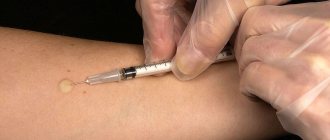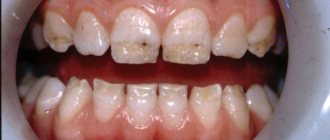The male reproductive system is a complex mechanism.
One of the most important reproductive organs is the testicles.
The testicles perform a number of functions necessary for conceiving a child. Nevertheless, there are frequent cases when pathology of testicular development is observed. For example, one of these pathological processes is testicular hypoplasia. This is a very serious disease, which is fraught with the most severe consequences (in particular, male infertility). However, in some cases the disease responds well to treatment.
Testicular hypoplasia: the essence of the problem
Testicles are a very important organ of the male reproductive system. They are located in the scrotum. It is in the testicles that the process of sperm formation occurs and testosterone, a sex hormone, is secreted. It is very important that the testicles have the appropriate temperature (1°C below normal body temperature). This is necessary for normal sperm maturation. Normally, a man has two testicles - left and right, each of which is located in a corresponding sac in the scrotum. A healthy testicle, the development of which proceeded without pathology, has a diameter of 5 to 7 cm.
However, in some cases, the development of the testicles stops when they or one of them reaches 4 cm in diameter. In this case, testicular hypoplasia is diagnosed, that is, a congenital anomaly of their structure. In this case, the disease can occur in one of two forms. Then testicular hypoplasia of one or both testicles is diagnosed. It is customary to adhere to the following classification of the disease:
- Unilateral hypoplasia. There is underdevelopment of the left or right testicle. The second, that is, a healthy testicle, is developed normally, no developmental pathology is detected: the shape and size of a healthy testicle are normal, its functions are also not impaired. Sometimes a healthy testicle may be slightly enlarged in size. This does not indicate an anomaly, but is the reason that a double load is placed on it, because the diseased testicle does not perform its functions. Unilateral testicular hypoplasia is sometimes accompanied by low testosterone levels, but cases of serious disturbances in hormonal levels and reproductive function in men are quite rare.
- Bilateral, or hypoplasia of both testicles. There is underdevelopment of both the left and right testicles. In this case, there is not only a cosmetic defect, but also much more serious problems for men's health. The disease of this form is always accompanied by hormonal disorders and, accordingly, reproductive ones too. Moreover, these violations are expressed very clearly. In some cases, the disease is accompanied by the presence of an extra X chromosome, which is called Klinefelter syndrome.
Diagnosis of testicular aplasia
Typically, testicular aplasia is diagnosed in newborn boys during a standard examination in the maternity hospital. According to statistics, in the presence of a testicular anomaly, an experienced doctor detects cryptorchidism by palpation in 70% of cases, in which the testicle does not descend into the scrotum due to retention (delay) in the inguinal canal or in the abdominal cavity.
In the remaining 30% of cases, the testicle cannot be palpated, and the task is to confirm the absence of the testes - testicular aplasia - or to determine the location of a viable testicle that has not descended into the scrotum in a timely manner.
Tests to detect testicular aplasia include blood tests for levels of hormones such as testosterone, androstenedione, LH (luteinizing hormone), FSH (follicle stimulating hormone), AMH (anti-Müllerian hormone). Newborn boys with bilateral nonpalpable testicles should have chromosome testing (karyotype) and a blood test for 17-hydroxyprogesterone levels, and be assessed for life-threatening congenital adrenal dysfunction. The need for such an examination is due to the fact that a boy with bilateral cryptorchidism or bilateral testicular aplasia may be mistaken for a child with a karyotype of 46, XX and adrenal hyperplasia.
Instrumental diagnostics are carried out using testicular scintigraphy, ultrasonography of the abdominal organs, CT or MRI of the inguinal and abdominal region.
Testicular hypoplasia: causes and symptoms
Deviation develops for a number of reasons. In any case, this pathology is congenital. This allows us to conclude that the disease is genetically determined, because if there are men in the family with a similar diagnosis, then the risk that boys will be diagnosed with the same disease increases many times over. Doctors note that the prerequisites for the development of pathology are laid in the embryonic period, that is, in the earliest stages of pregnancy. Other possible reasons for this deviation can be identified:
- Chromosomal abnormalities.
- Various negative factors that affected the fetus during intrauterine development.
Often a man is diagnosed in childhood. But sometimes, for various reasons, a man learns about a deviation from the norm when he is already an adult.
Risk factors
Experts name such risk factors for testicular aplasia as gene mutations (in particular, the SRY gene), exposure of the expectant mother’s body in the first or second month of pregnancy to radiation, electromagnetic radiation, mutagenic chemicals, alcohol and psychotropic substances, and certain medications (in particular, analgesics and hormonal agents).
Anomalies of the external genitalia of the fetus can be a consequence of endocrine pathologies of pregnant women, hormonal disorders, excess weight, and infectious diseases.
This defect, like cryptorchidism (undescended testicle into the scrotum), is observed in newborn boys born with significant premature pregnancy.
The pathogenesis of this anomaly of the male reproductive organs is associated with the peculiarities of their formation at the end of the embryonic period (from the 7th week of pregnancy). Although as early as the 4th week, in the mesonephros of the embryo (medial to the mesonephric ducts), the rudiments of the gonads appear in the form of gonadal urogenital ridges, which do not have sexual differences until the 8th week.
Only by the end of the second month of pregnancy does the set of chromosomes present in the embryo determine the differentiation of its sex. This is the Y chromosome gene SRY, which encodes the ontogenesis of the testes. Thanks to the activation of the protein transcription factor TDF (testis-determining factor), the male gonads, the testes, begin to develop.
Moreover, after the 9th week of intrauterine development, the primary germ cells (gonocytes) of the fetus, under the influence of human chorionic gonadotropin, begin to secrete androgenic steroids (androstenedione) and the male sex hormone testosterone. With insufficient inducing activity of TDF, testosterone is produced less than normal, which leads to testicular regression and abnormalities in the formation of the gonads - testicular aplasia (monorchidism or anorchia).
Symptoms of hypoplasia
First of all, pathology is detected exclusively visually. Often men turn to doctors in the later stages, when the couple cannot conceive a child and the question of possible infertility of one of the spouses becomes relevant. If a man has hypoplasia of the right and left testicles since childhood, then he may not be aware of the pathology at all. It is easier in cases where there is a unilateral pathology, since the difference in size is too obvious. In addition, the pathology is often accompanied by cryptorchidism. This is another disorder that is characterized by incomplete descent of the testicle into the scrotum. In addition to visual symptoms, there are also much more serious ones that can only be detected as a result of tests, tests and diagnostics.
So, the main symptom is a violation of the hormonal sphere of a man. With unilateral pathology, this is not always expressed, and if there is pathology, it is not too significant. In some cases, this condition does not even require special treatment. But with a bilateral violation, the hormonal sphere is very seriously affected:
- there is a deficiency of testosterone;
- functions decrease (in particular, the process of formation and maturation of sperm is disrupted);
- there are no convoluted tubules.
And if in the case of unilateral pathology the healthy organ takes over the functions of the patient, thereby compensating for the consequences of the disorder, then in case of bilateral pathology the compensatory mechanism does not start, which leads to serious consequences for men’s health. The process of treating hypoplasia is very labor-intensive and does not always guarantee a good result.
Complications and consequences
However, this does not happen in all cases, and if the level of testosterone synthesized by one testicle is too low, then adolescent boys may have such consequences and complications of testicular aplasia as primary hypogonadism: delayed development of secondary sexual characteristics, disorders of the formation of the skeleton and muscles, gynecomastia , accumulation of excess fat deposits. As a result, men lack sexual and reproductive capabilities.
With anorchia - the absence of both testicles - the severity of hypogonadism, in particular the appearance of signs of eunuchoidism, depends on at what stage of intrauterine development the disturbances in the formation of the genitalia in the fetus occurred.
Consequences of testicular hypoplasia
Hypoplasia is a very serious and even dangerous disease. Among the most severe consequences are the following:
- Male infertility. The formation and maturation of sperm occurs in the testicles. Consequently, any violation, deviation from the norm, or pathological process directly affects the formation, quality, and quantity of sperm. Men who have been diagnosed with a unilateral pathology should not worry too much, since in this case the main function is taken over by a healthy organ. This is quite enough to conceive a child, since spermatogenesis is normal, active sperm are contained in sufficient quantities to fertilize the egg. But in the case of bilateral pathology, absolute male infertility is usually diagnosed, since both organs do not function.
- Testosterone deficiency. In turn, this can lead to decreased libido, impotence, and the absence of secondary male sexual characteristics. In addition, a disturbance in sperm production is observed in the affected organ (or organs).
- Not only reduction, but also atrophy of the testicles, their degeneration. If the disease is not treated, over time it can cause complications in the form of testicular atrophy, which will add problems to the man both physically and psychologically.
- Oncology. Hypoplasia in some cases can provoke the development of tumors, including malignant ones. This is another reason why you cannot turn a blind eye to the disease.
Treatment methods for testicular hypoplasia
Treatment methods depend on what form of the disease is diagnosed in the patient. Thus, with a unilateral form, treatment may not be carried out, but great attention should be paid to the prevention of complications, which includes:
- Regular examination by an endocrinologist and urologist in order to promptly identify possible progression of the disease.
- Healthy lifestyle. In particular, you need to give up bad habits, not get too cold, maintain personal hygiene, practice only protected sexual intercourse, etc. The fact is that it is very important to have a strong immune system and by any means to prevent possible diseases of the genitourinary system, many of which develop either as a result of infections or due to inflammatory processes.
Only in the case of tireless prevention can the aggravation of the situation, the development of complications, etc. be avoided. Those men who have been diagnosed with a bilateral form of the disease only need to be treated. Hypoplasia is treated by a urologist and an endocrinologist, with the possible involvement of other specialists. The course of treatment depends on how far the disease has progressed, the severity of its course, the presence of complications and other factors.
How to treat the disease
Drug therapy depends on the type of disease present and the age of the patient at which it is detected. Unilateral hypoplasia usually does not require serious treatment, since the ability to procreate and lead a full intimate life is not lost.
But patients with this disease need regular preventive measures.
They are registered with a urologist and endocrinologist, undergo regular examinations, take the necessary tests, the task of which is to promptly detect possible complications.
A healthy and active lifestyle is important, including good nutrition, absence of bad habits, physical activity, and control of psycho-emotional state.
You should also strengthen the body's defenses to prevent the development of genitourinary infections that can worsen the patient's condition. Until a man begins to plan a family and is confident in the sexual health of his partner, he is recommended to use barrier contraception to reduce the risk of contracting STDs to a minimum.
With bilateral hypoplasia, you cannot do without medication. Drugs and procedures are prescribed by a number of specialized specialists: endocrinologist, urologist, surgeon, etc. The duration of therapy depends on the severity of the pathology, the presence of complications and the general health of the man.
The basis of drug therapy is hormonal drugs that restore testosterone levels in the patient’s blood. The drug itself, the duration of its use and doses are prescribed strictly individually for each patient.
In some cases, a course of treatment is sufficient; in rare cases, steroids are taken continuously.
The deficiency of healthy sperm is also compensated by hormones; such treatment is indicated for family planning. When sperm levels are restored to healthy levels, they are frozen so that in the future (if necessary) there is the possibility of resorting to artificial insemination.
Surgical treatment is indicated for patients whose pathology is life-threatening. In this case, the underdeveloped testicle is removed, sometimes both. The most common indication for surgery is the presence of a malignant tumor. The second stage of treatment is a course of chemotherapy aimed at fighting the remaining cancer cells in the body.
If the pathology does not cause health problems, but causes aesthetic discomfort, a man can resort to plastic surgery and insert an implant that will bring the shape and size of the scrotum closer to natural.
The decision about such an operation must be made together with the attending physician, since the operation may be contraindicated for a number of reasons.
Urologist-andrologist with 11 years of experience. Specializes in conservative and surgical treatment of the entire spectrum of urological and andrological diseases.
Testicular hypoplasia
– congenital underdevelopment of one or both testicles, leading to androgen deficiency. Testicular hypoplasia is accompanied by a decrease in the size and asymmetry of the scrotum, small penis size, impaired puberty, pseudogynecomastia, decreased libido, impotence, and male infertility. The diagnosis of testicular hypoplasia is based on examination and palpation of the scrotum, the results of ultrasound of the scrotal organs, spermogram, and studies of the level of total and free testosterone. Treatment of testicular hypoplasia includes hormone replacement therapy, prosthetic replacement of an underdeveloped testicle, and donor organ transplantation.
Treatment methods for bilateral hypoplasia
There are several measures that are used in the treatment of men with hypoplasia.
Drug treatment (hormonal therapy)
One of the most successful options for such patients is hormone replacement therapy. Testosterone preparations, their dosage and duration of use should be prescribed exclusively by a doctor (in this case, this is the task of an endocrinologist). The dosage of hormonal drugs is calculated for each patient individually. Taking such medications on your own, even after reading the instructions, is very dangerous and is therefore strictly prohibited. In this case, medications can be taken in courses, or maybe on an ongoing basis. However, even hormonal therapy does not guarantee that complications in the form of tumors, etc., will not occur.
Infertility treatment and cryopreservation
Sometimes hypoplasia causes a complication in the form of teratozoospermia. This pathology is characterized by the fact that the ejaculate contains very few active and healthy sperm, as a result of which a woman cannot become pregnant. One of the treatment options for infertility in this case is therapy with human chorionic gonadotropin. This drug allows you to increase the number of sperm that are normal in terms of morphology. After this, the active sperm are frozen using a cryopreservation procedure. This is done as a safety net if fertilization does not occur naturally.
Surgical intervention
In some cases, it is necessary to resort to a radical measure, that is, surgical intervention. The operation involves removing the diseased organ (one or both testicles). Sometimes this is the only opportunity to save a man's life. For example, this method is used if a man has a tumor, especially a malignant one. After surgery, special hormonal therapy is always prescribed.
There is another option that does not have a therapeutic function in its pure form, but is nevertheless important for some men.
Cosmetic surgery
In cases where a man is also concerned about the aesthetic side of the issue, the doctor may offer him a procedure for aesthetic testicular prosthetics. The advantage of this procedure is that it does not affect male fertility (if we are talking about a unilateral pathology) and is purely aesthetic. At the same time, this aspect is sometimes very important for a man’s psychological state. It is possible to perform prosthetic replacement of one or both testicles, depending on the situation. The operation is painless, easily tolerated by the body and does not pose a risk to the man’s health, although it has a number of contraindications, which the doctor warns about.








